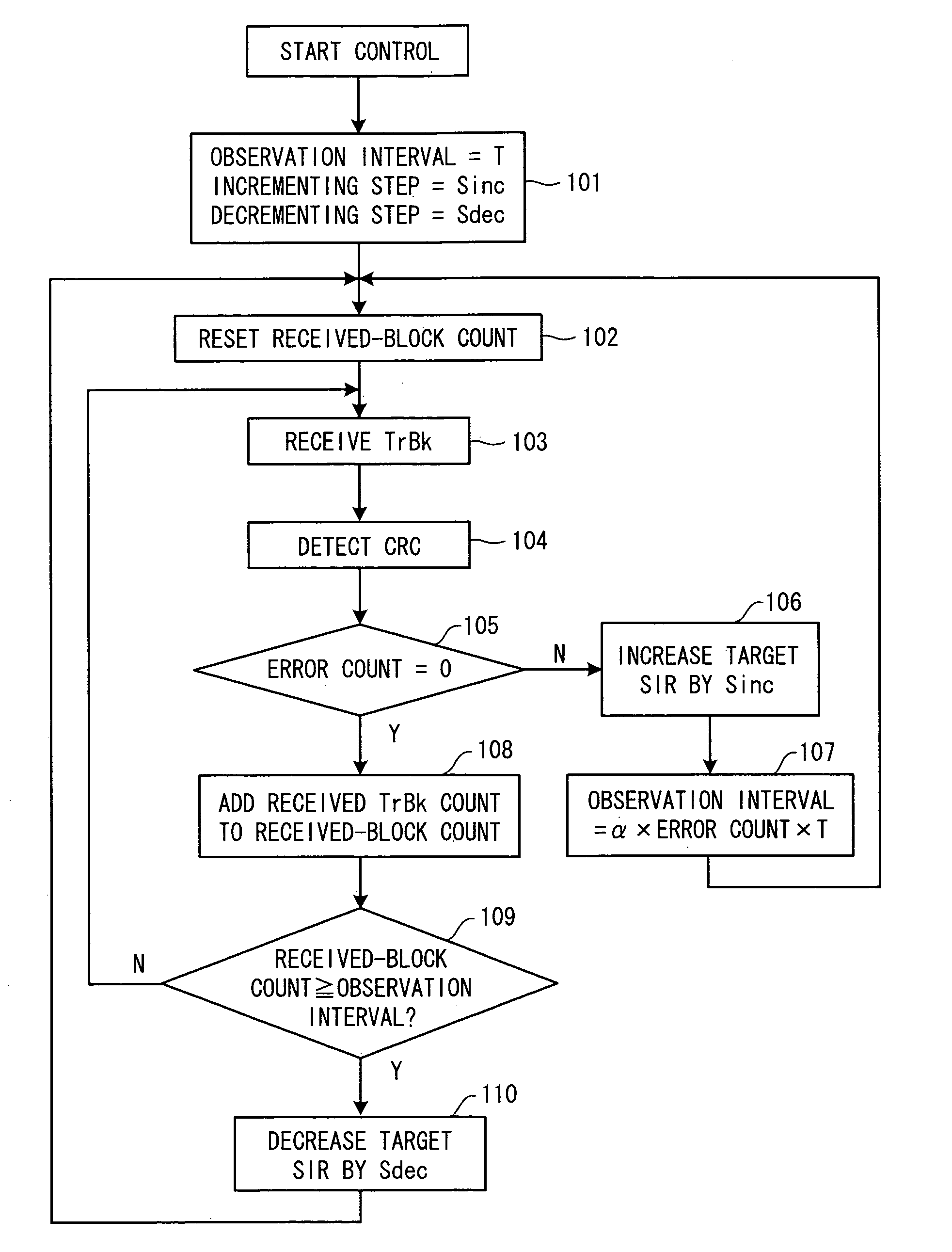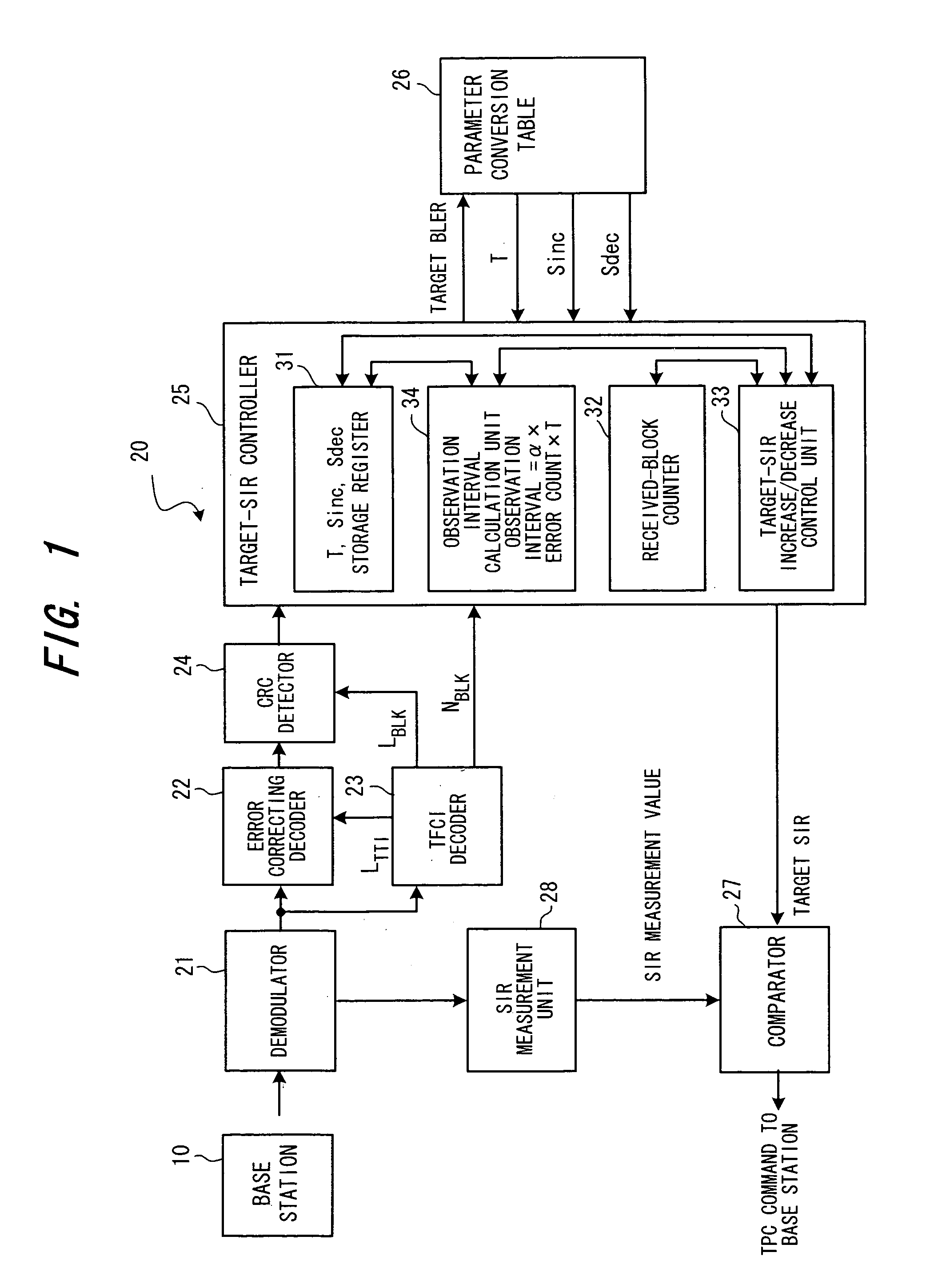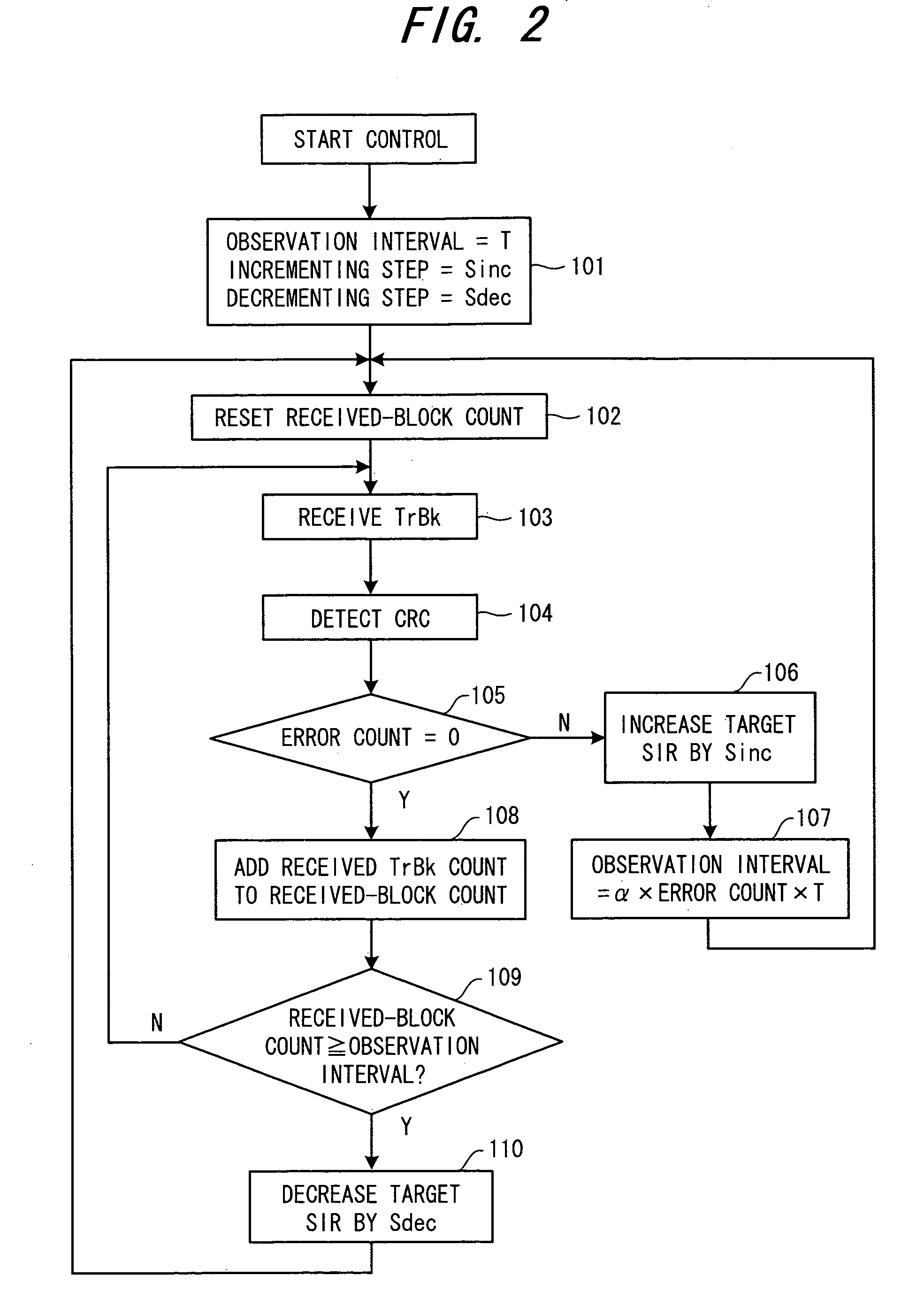Communication apparatus and outer-loop power control method
a communication apparatus and power control technology, applied in power management, transmission monitoring, wireless communication, etc., can solve the problems of affecting the quality of the received signal in the mobile station linked to the base station, affecting the quality of the received signal in the mobile station in a stable manner, and affecting the quality of the received signal
- Summary
- Abstract
- Description
- Claims
- Application Information
AI Technical Summary
Benefits of technology
Problems solved by technology
Method used
Image
Examples
first embodiment
(A) First Embodiment
[0067]FIG. 1 is a block diagram of a first embodiment of the present invention and illustrates in detail the part of a mobile station that is for outer-loop power control. FIG. 2 is a flowchart of processing for controlling target SIR according to the first embodiment. The first embodiment is such that if error has been detected, α×Nerr×T is used instead of an initially set value T as the observation interval up to detection of the next error. More specifically, α×Nerr×T, which is the result of multiplying the set value T by a coefficient (α×Nerr) that conforms to the error count Nerr, is used as the observation interval.
[0068]In FIG. 1, a signal (a downlink signal) sent from a base station 10 is demodulated by a demodulator 21 in a mobile station 20 and then input to an error correcting decoder 22 and TFCI decoder 23. FIG. 3(a) is a diagram for describing the frame format of the downlink signal from the base station 10 to the base station 20. One frame has a dur...
second embodiment
(C) Second Embodiment
[0085]FIG. 9 is a block diagram of a second embodiment of the present invention and illustrates in detail the part of a mobile station that is for outer-loop power control. Components identical with those of the first embodiment are designated by like reference characters. FIG. 10 is a flowchart of processing for controlling target SIR according to the second embodiment. The second embodiment is such that if error has been detected, a value (=α×Nerr×Sin c) that is the result of multiplying an initially set value Sin c by the coefficient (=α×Nerr) that conforms to the error count Nerr is used instead of the initially set value Sin c as the incrementing step (amount of increase) of the target SIR.
[0086]In FIG. 9, the CRC detector 24 performs CRC error detection every transport block TrBk and the operation thereof until the error-detection result of each TrBk is input to the target-SIR controller 25 is similar to that of the first embodiment.
[0087]The target-SIR co...
third embodiment
(C) Third Embodiment
[0097]FIG. 14 is a block diagram of a third embodiment of the present invention and illustrates in detail the part of a mobile station that is for outer-loop power control. Components identical with those of the first embodiment are designated by like reference characters. FIG. 15 is a flowchart of processing for controlling target SIR according to the third embodiment. According to the third embodiment, a value resulting from division of the initially set Sdec by the coefficient (=α×Nerr) conforming to the error count Nerr that prevailed the last time an error was detected is used instead of Sdec as the decrementing step (amount of decrease) of the target SIR that prevails if a single error has not been detected during the time of the observation interval.
[0098]In FIG. 14, the CRC detector 24 performs CRC error detection every transport block TrBk and the operation thereof until the error-detection result of each TrBk is input to the target-SIR controller 25 is ...
PUM
 Login to View More
Login to View More Abstract
Description
Claims
Application Information
 Login to View More
Login to View More - R&D
- Intellectual Property
- Life Sciences
- Materials
- Tech Scout
- Unparalleled Data Quality
- Higher Quality Content
- 60% Fewer Hallucinations
Browse by: Latest US Patents, China's latest patents, Technical Efficacy Thesaurus, Application Domain, Technology Topic, Popular Technical Reports.
© 2025 PatSnap. All rights reserved.Legal|Privacy policy|Modern Slavery Act Transparency Statement|Sitemap|About US| Contact US: help@patsnap.com



